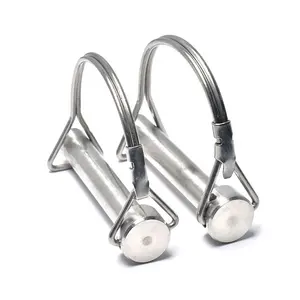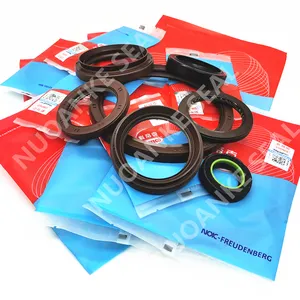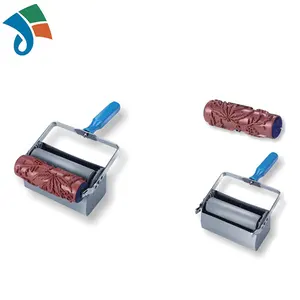Popular in your industry




























































Related Searches:
















































































































































Top categories
About types of locking pins
In the intricate world of mechanical engineering, the unsung heroes often come in the smallest packages. Locking pins, the quintessential components for a myriad of applications, provide the backbone for secure and reliable fastening in countless industries. From the self-adjusting marvels that keep manufacturing lines humming to the quick-release variants that revolutionize maintenance, these pins are the linchpins of stability and safety. This article delves into the diverse universe of locking pins, exploring their essential roles, varied types available on Alibaba.com, and their critical applications across different sectors. Join us for an insider's look into the multitude of locking pin types and their indispensable uses, ensuring the integrity of machinery and equipment worldwide.
The Essential Role of Locking Pins in Industry
Locking pins are integral components in mechanical engineering, playing a crucial role in ensuring the stability and security of machine parts and equipment. These pins are primarily utilized as semi-permanent fastening solutions, enabling parts to be securely joined while allowing for relative movement or positioning. Their importance is underscored by their widespread use across various industry sectors, particularly in machine engineering and manufacturing.
The functionality of locking pins is diverse, as they cater to applications that require both permanent solutions and those needing frequent adjustments. For instance, self-locking fastening pin types are designed for quick modifications of manufacturing equipment, streamlining the adjustment process without compromising the secure fastening of components. This adaptability makes them a preferred choice for technicians and engineers who seek efficiency and reliability in their fastening mechanisms.
Moreover, the use of locking pins extends to quick-release variants, which are equipped with features like spring-loaded balls and push-button release mechanisms. These facilitate easy installation and removal, enhancing the operational flexibility of machinery. The selection of a locking pin, from self-locking to manual locking types, is determined by the specific requirements of the application, ensuring that the right balance between security and adjustability is achieved.
Diverse Types of Locking Pins Available on Alibaba.com
Alibaba.com showcases a broad spectrum of locking pins, catering to various applications and industries. Among the selection, stainless steel line array push button T handle self-locking pins are prominent for their ease of use and secure fastening capabilities. Parallel pins offer precision and strength for alignment purposes. Customized pins are available to meet specific requirements in automotive and general industry applications, ensuring versatility and adaptability.
The assortment includes stainless steel elastic cylindrical hollow dowel pins with parallel grooves, designed for secure positioning and load-bearing applications. For furniture and shelving, hardware nickel-plated dowel pins provide reliable support for shelf pegs and bookshelf stability. High customization is evident with the availability of stainless steel cotter pressure link pins, clevis pins with heads, and various quick-release ball locking pins that facilitate rapid assembly and disassembly, enhancing operational efficiency.
Safety and security are paramount in locking mechanisms, as demonstrated by the carbon steel galvanized O type locking safety spring cotter pins and the variety of R type and B type cotter pins. These components are engineered for resilience and durability under strenuous conditions. The metal snap lock pins and safety locking pins underscore the commitment to safeguarding equipment and structures. Tapered pins, including heat-treated medium carbon steel types, offer a conical design that ensures a tight fit and resistance to loosening.
Applications: Securing Success Across Various Industries
Ball lock pins are integral to various industries due to their robust and secure fastening capabilities. In construction, they are pivotal for holding equipment and scaffolding together, ensuring safety during transport and preventing onsite accidents. The aerospace sector relies on them for connecting critical moving parts, withstanding forces and vibrations without failure, crucial for maintaining aircraft integrity. Railroads utilize these pins within switches, where durability under pressure is essential for smooth and safe train operations.
Agricultural applications include the handling of hay bales and grain bags, where ball lock pins provide secure anchor points for lifting machinery, minimizing the risk of accidents. In conveyor systems, they facilitate seamless transitions between components, preventing operational hazards. The automotive industry incorporates them for various purposes, including the assembly of tension springs and connecting parts, while in plumbing, they are used to securely connect pipes and fasten them to structures, ensuring stability when handling heavy loads.
Key Features of High-Quality Locking Pins
Locking pins are integral components in mechanical engineering, designed for securing parts in a precise position. A key feature of high-quality locking pins is their quick-release mechanism, often spring-loaded, which allows for rapid engagement and disengagement without the need for additional tools. This feature is particularly evident in self-locking quick release pins, which typically include a spring-loaded ball that ensures the pin remains securely in place until the release mechanism is actuated.
The diversity of locking pins extends to their actuation methods, with some requiring a push-button, and others a push or pull motion, catering to different operational needs. The materials used in these pins, such as corrosion-resistant stainless steel, contribute to their durability and suitability for various environments. Additionally, the presence of handles in various shapes like D-Ring, T-Handles, or L-handles, enhances the usability of the pins, especially in space-constrained applications.
Another aspect of high-quality locking pins is the variety of locking mechanisms they employ. From magnetic quick release pins that utilize magnetic axial locks for a positive stop to clevis pins that can be secured with a cotter pin, the range of locking methods ensures that there is a locking pin suitable for virtually any application. The design of these pins often includes features that facilitate easy removal when necessary, such as internal threading in pull dowel pins for extraction with specialized tools.
Material Matters: Composition of Locking Pins
Locking pins are integral components in various industries, crafted from materials designed to ensure durability and functionality. The composition of these pins often includes high-carbon steel or stainless steel, which are favored for their strength and corrosion resistance. Stainless steel variants are particularly prevalent in environments where rust or corrosion could be detrimental. Technopolymers are also utilized in the manufacturing of certain locking pins, offering a lightweight yet robust alternative to metal pins.
The choice of material for a locking pin is crucial as it directly impacts the pin's performance in specific applications. For instance, magnetic quick release pins rely on the magnetic properties of the materials used, which must align with the required retaining forces and the smoothness of the pin and insertion bore surfaces. Similarly, the internal threading in pull dowel pins, which allows for their extraction with specialized tools, is an essential feature that depends on the material's machinability and strength.
In summary, the material composition of locking pins is a key factor that determines their suitability for various applications. Whether it's the anti-corrosive properties of stainless steel for outdoor use or the precision threading in pull dowels for easy removal, the materials used in locking pins are selected to provide reliable and secure fastening in a multitude of settings.
Advantages of Sourcing Locking Pins
Our platform offers a diverse range of locking pins, catering to various industrial needs. The selection includes stainless steel options known for their durability and resistance to corrosion, making them suitable for a wide array of environments. From quick-release ball lock pins that offer ease of use and secure fastening for quick assembly and disassembly, to T-handle and button head pins that provide a secure grip, the variety meets different operational requirements.
The locking pins available come in various sizes, including metric and inch sizes, and are equipped with features like self-locking mechanisms and spring-loaded designs for enhanced security and functionality. The assortment also includes pins with additional accessories such as rings and ropes, which aid in preventing loss and ensuring easy retrieval.
Sourcing locking pins is advantageous for businesses looking for customizable solutions. The platform's suppliers offer OEM services to cater to specific requirements, ensuring that the locking pins fit the precise needs of different machinery and equipment. With a focus on reliability, the locking pins featured are designed to provide strong hold and precise fit, essential for maintaining safety and efficiency in operations.
How to Choose the Right Locking Pin for Your Needs
Choosing the right locking pin for your needs involves understanding the specific requirements of your application. For space-constrained applications, the handle shape of quick-release pins, such as D-Ring, T-Handles, or L-handles, can be a critical factor. The type of locking mechanism is also important; for instance, detent pins are suitable for applications requiring a positive locking mechanism, which is common in automation and robotics.
When frequent adjustments are necessary, self-locking quick-release pins that feature a spring-loaded ball at the base are ideal due to their ease of use without tools. For applications that demand a more secure hold, such as those that involve heavy machinery or transportation, pull dowel pins with internal threading can be removed with specialized tools, offering a more permanent solution.
In environments where magnetic interference is not an issue, magnetic quick-release pins can provide a positive stop with the added benefit of easy alignment due to their magnetic axial locks. For applications that require alignment, such as with jigs and fixtures, alignment pins are available in various shapes and sizes to ensure precise positioning.
Ultimately, the selection of a locking pin should be based on the specific application, the environment in which it will be used, and the frequency of adjustments required. By considering these factors, you can ensure a secure and efficient fastening solution for your industrial needs.
Conclusion
Locking pins stand as a testament to the ingenuity of industrial design, offering a blend of security and convenience that is unparalleled in mechanical fastening. Throughout this article, we've explored the vast array of locking pins available, each tailored to meet the demands of different environments and applications. From the robust ball lock pins securing construction sites to the precision of alignment pins in manufacturing, these components are pivotal in maintaining operational safety and efficiency. The key to their effectiveness lies in their diverse designs, materials, and locking mechanisms, all of which cater to specific industrial needs. When selecting the right locking pin, considerations of space, security, and application-specific requirements guide the decision, ensuring a perfect fit for every task. The extensive selection and customizable options make it an ideal source for securing the locking pins that industries rely on. In conclusion, whether for the dynamic world of aerospace or the precision-dependent realm of robotics, locking pins are the silent guardians, ensuring success across various industries.


















































